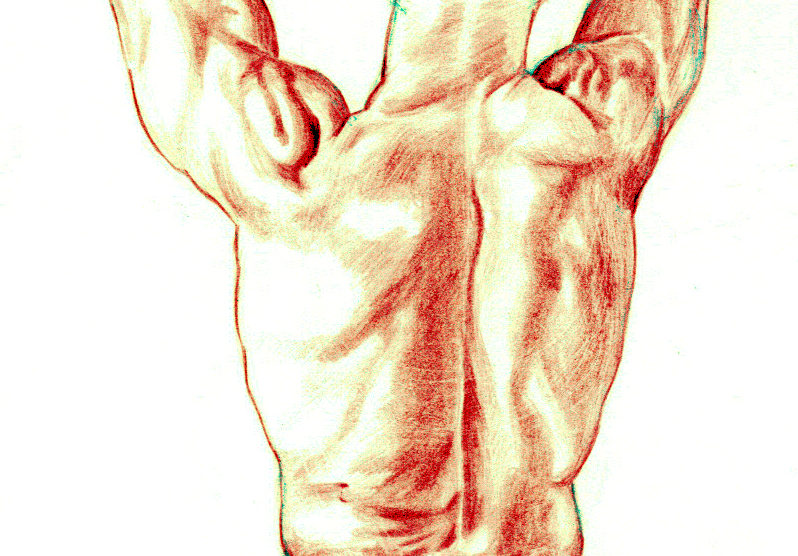When we participate in photographing and being photographed we are also engaging in mirror-gazing, but in a positive and prolonged fashion. Artistic figure modeling allows us to understand the plastic nature of our bodies and how we have enough power over our aesthetic to affect all the formal artistic principles such as negative and positive space, symmetry, radial balance, color theory, mood, etc. In the nude we find liberty and separation from both our form and sexuality. We find out which parts of our bodies imbue us with strength or which parts imbue us with vulnerability. And like any practice in Mindfulness, photography freezes that moment in time so that we can meditate upon it and seek enlightenment. It allows us to realize that we have no “flaws” but instead just rich, meaningful detail which we can accentuate as loudly or as quietly as we’d like. Scholars Phillips et. al. & Veal supports an approach for CBT that creates a healthy ethic when we mirror-gaze composed of several points:
- ) “Use mirrors at a slight distance and use ones that are large enough to show most of the body”;
- ) “Focus attention on the reflection in the mirror rather than on how you feel”;
- ) “Use a mirror only for an agreed function (e.g. shaving, putting on make-up) and for a limited period of time”;
- ) “Use a variety of different mirrors and lights rather than sticking to the one you ‘trust’ “;
- ) “Focus attention on the whole of your face rather than on selected areas”;
- ) “Do not use mirrors that magnify”;
- ) “Do not use ambiguous reflections (e.g. windows, the backs of compact disks or cutlery)”;
- ) “Do not to use a mirror when you feel depressed: try to delay essential use until you feel happier or find other things to do until the urge to mirror-gaze has passed” (Veal 2001, p 131).
Veal essentially outlines an approach on how to look at ourselves aesthetically. Just as in art appreciation, even with ourselves, there is a formal and trained way to look. Not just an intuitive “good picture” or a narcissi tic, isolated selfie.
Top self-image principles are:
1.
Achieve absolute confidence
2.
Feel relaxed and great naked
3.
Become comfortable in your own skin
4.
Embrace of your inner exhibitionist
To establish a psychological baseline about your self-image are the following self-assessments. These of course should not be taken in lieu of actual physician’s advice. However these are helpful in gauging the nature of advice to seek, goals to set, etc. with a trained clinical professional.:
- https://www.thebodywiseprogram.com/body-image-quiz
- https://foundrybc.ca/quiz/eating-body-image-self-check/
